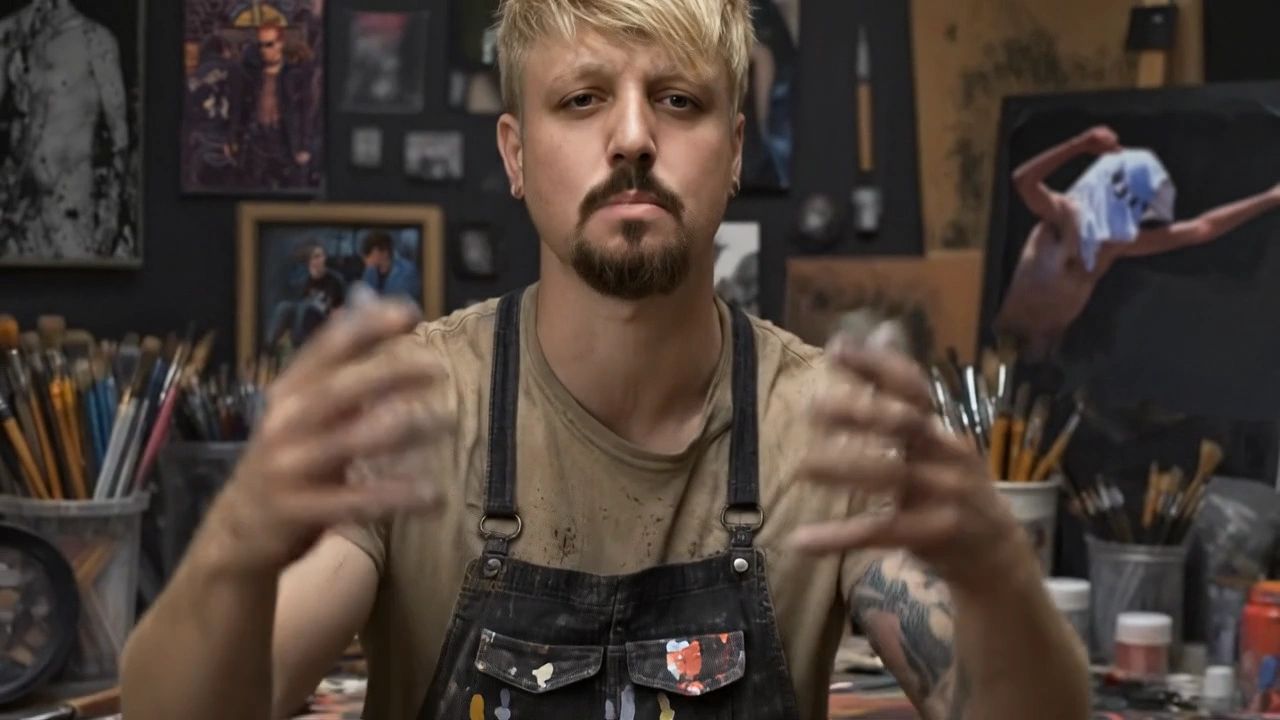
Award-winning artist with work sold at Sotheby’s and in the Presidential permanent collection (BR). Exhibited at The Heckscher Museum, Leslie Lohman Museum of Art, Long Island Museum, and Arkell Museum. Since the 1980s, Fernando Carpaneda has created punk and homoerotic sculptures and paintings, exhibiting at CBGB’s gallery, The Tom of Finland Foundation, and other major institutions.
SOTHEBY'S NEW YORK CITY
Fernando Carpaneda’s painting Jesus Christ was successfully auctioned at Sotheby’s as part of the New York Academy of Art’s renowned “Take Home a Nude” event. Celebrated for spotlighting influential contemporary creators, the auction recognized Carpaneda’s singular artistic approach and reinforced his growing visibility on the global art stage. More
STATIONS OF THE CROSS PUBLIC ART INSTALATION IN NEW YORK

The George Mercer, Jr. Memorial School of Theology in the Episcopal Diocese of Long Island
Fernando Carpaneda’s work bridges the raw energy of punk, the celebration of LGBTQIA+ identity, and the spiritual reflection of the Stations of the Cross. Across decades, his punk-inspired art has embraced rebellion, freedom, and outsider perspectives, while his LGBTQIA+ work honors visibility, dignity, and human diversity. In creating the Stations of the Cross, Carpaneda channels these same values—transforming a traditional spiritual narrative into a deeply personal, inclusive, and contemporary meditation on struggle, resilience, and the courage to exist authentically. More
The Presidency Embraces Pride
How Carpaneda’s painting entered the Presidency and redefined the dialogue between art and inclusion
Fernando Carpaneda’s painting Pride is now part of the permanent art collection of the Presidency of the Republic of Brazil, following a direct invitation from the President’s office. The work stands as a powerful reminder of how art can resist, include, and celebrate human diversity. Its presence inside one of the nation’s most emblematic institutions opens a rare dialogue between art and society, past and present, politics and sensitivity. Carpaneda notes that this moment is both personal and collective—a tribute to every voice that has fought for visibility and representation. Pride affirms life, identity, and the courage to exist in a world that doesn’t always make room for difference. With the support of Rogério Carvalho, Director and Curator of the Presidential Palaces—whose vision champions Brazilian art and cultural diversity—the work now speaks not only for Brazil, but for universal values of equality, freedom, and respect.

In the Film: The Nearest Human Being
Fernando Carpaneda’s work reaches the big screen with the inclusion of his sculptures in Marco Coppola’s critically acclaimed film The Nearest Human Being. The production features standout performances by Charlie Hofheimer, Natalia Dyer (Stranger Things), Robert W. Smith, and Dan Shaked, and was awarded Best Feature at the 2019 Manhattan Film Festival. More
Leslie Lohman Museum of Art
Fernando Carpaneda's sculptures were featured in "On Our Backs: The Revolutionary Art of Queer Sex Work." The exhibition explored the history of queer sex work culture and its intimate ties to art and activism.
cbgb
Fernando Carpaneda's exhibitions at CBGB's included "Back to the Bowery," "The Bowery Electric Festival: A Tribute to Joey Ramone," and "Vinnie Wartlip Retrospective." These exhibitions featured prominent figures from Andy Warhol's The Factory, such as photographer Billy Name, who designed The Factory, among others.
times square
Fernando Carpaneda art works was on display at Times Square June 18, 2012 in giant screens bright LEDs during the opening of the exhibition ART TAKES TIMES SQUARE. The scale of the exhibition was extraordinary and seen by more than half a million people.
Contact Me
FERNANDO CARPANEDA
Owner and Founder of Carpazine Art Magazine.
New York, New York, United States
WARNING ADULT CONTENT 18+
This site contains content intended for individuals 18/21 years of age or older as determined by the local and national laws of the region in which you reside. If you are not yet 18+, leave this website immediately. By entering this website, you agree that you are at least 18 years of age or older. You will not redistribute this material to anyone, nor will you permit any minor to view this material.
